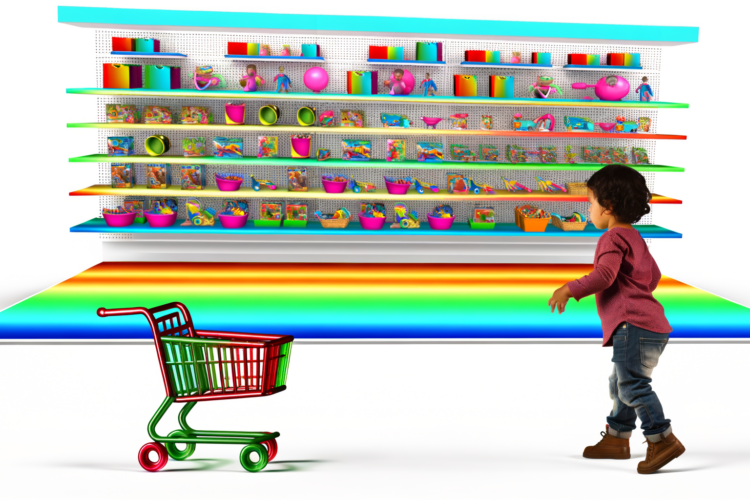
SEO, or Search Engine Optimization, can significantly boost an artist’s online gallery by increasing its visibility and discoverability to potential collectors and art enthusiasts. By optimizing their website for search engines, artists ensure that when people search for art online, their gallery is likely to appear higher in search engine results pages (SERPs), attracting more traffic and, consequently, potentially more business.
Understanding the Importance of SEO for Artists
In today’s digital world, the majority of art discovery and purchases happen online. Artists, like any other business owner, need to capitalize on this digital movement to reach a wider audience. Unlike traditional methods of promotion, which can be costly and less effective, a well-implemented SEO strategy can provide consistent, long-term results at a fraction of the cost.
Visibility in a Crowded Market
The internet is a crowded marketplace with countless artists vying for attention. SEO helps to cut through the noise and place your gallery in front of those actively looking for art. Keywords play a crucial role here. By using relevant keywords that art buyers are searching for, you can improve the odds that your online gallery will appear in their search results.
Building Authority and Trust
SEO is not just about getting visitors to your site; it’s also about building credibility. Websites that rank higher in search results are often perceived as more trustworthy and authoritative. By ranking well, you’re not only more likely to get clicks but also to be seen as a serious and professional artist.
How to Optimize Your Online Gallery for Search Engines
SEO for an artist’s online gallery involves several key strategies. Each of these strategies contributes to the overarching goal of enhancing your gallery’s online presence so that it can be easily found by potential buyers and art lovers.
Crafting a User-Friendly Website
Before diving into keywords and content, ensure that your website is well-designed and user-friendly. It should load quickly, be easy to navigate, and be mobile-friendly since a significant portion of users browse on mobile devices.
Keyword Research
- Identify keywords that potential buyers might use to find the type of art you create. This includes generic terms like “online art gallery” and more specific terms related to your art style or medium.
- Utilize keyword research tools to analyze the popularity and competition for these terms.
- Incorporate these keywords naturally into your website’s copy, including titles, meta descriptions, and image alt text.
On-Page SEO
Correct on-page SEO techniques ensure that search engines understand the content of your site, which helps with ranking for the right terms.
- Optimize title tags to include relevant keywords and give a clear idea of the page content.
- Use header tags (like h2, h3, etc.) to structure your content and include keywords when appropriate.
- Write enticing meta descriptions that include keywords and encourage clicks from the search engine results pages.
Quality Content Creation
Creating engaging, high-quality content is a core facet of SEO. This not only includes vivid descriptions of the artworks and the artist’s bio but also valuable art-related content that can attract more visitors.
- Maintain a blog to share insights into your process, art trends, or tips for art collectors.
- Create descriptive and engaging content about each piece of art, which can include its inspiration, the materials used, and the story behind it.
- Keep content updated with your latest work and exhibitions to show that your gallery is active.
Link Building
Quality backlinks from authoritative websites signal to search engines that your site is a valuable resource, thereby boosting your rankings.
- Reach out to other artists, art bloggers, and online publications for features or guest posting opportunities.
- Encourage happy customers to link to your gallery from their blogs or websites.
- Partner with art-related businesses to create link-sharing arrangements.
Social Media Integration
While social media doesn’t impact search rankings directly, it can indirectly affect your SEO efforts. Social media can increase brand exposure and traffic to your site, which are positive signals to search engines.
- Share new pieces and blog posts on your social media channels.
- Engage with followers and direct them to your website for more information or to make a purchase.
- Use social media to build relationships with influencers and other artists who can help amplify your content.
Monitoring and Adapting
SEO is not a set-it-and-forget-it strategy. It requires continuous monitoring, analysis, and adjustment to stay ahead of the competition and adapt to changing algorithms.
- Use tools like Google Analytics to track your website’s performance and understand how visitors interact with your site.
- Regularly check your rankings for key keywords and work on improving them over time.
- Stay informed about the latest SEO trends and best practices to ensure your strategy remains effective.
Practical SEO Tips for the Artist’s Website
Beyond the strategies above, consider these practical tips to enhance your SEO efforts:
Optimize Images
Artists’ websites are image-heavy, which can impact page load times—a ranking factor for search engines. Optimize your images for the web by compressing file sizes and using descriptive file names and alt attributes that include keywords.
Local SEO
If your art is tied to a specific location or you participate in local events, local SEO can be incredibly valuable. Make sure your website mentions your location, and consider creating local business listings on platforms like Google My Business.
Structured Data Markup
Structured data markup is a way to provide search engines with detailed information about your site’s content. For an artist, this could include information about events, artworks, and reviews, which can help your website stand out in search results.
Finishing Thoughts
SEO can prove to be a game-changer for artists seeking to boost their online gallery. By improving your website’s visibility and searchability, you broaden your reach to a global audience, all while establishing your brand’s presence online. Remember, SEO is a continuous process that requires patience and persistence; the work you put in now will pay dividends over time as more people discover and engage with your art through the digital space. Stay committed to refining your strategies, and your online gallery will see increased traffic, higher engagement, and, ultimately, more sales.“`html
Frequently Asked Questions
What is SEO and why is it important for an artist’s online gallery?
SEO stands for Search Engine Optimization and involves practices designed to improve a website’s visibility on search engines like Google. It is crucial for an artist’s online gallery as it can significantly increase organic traffic, attract more visitors, and enhance the chances of selling art. By optimizing their site, artists ensure their work is easily discoverable by potential buyers searching for related art online.
How can SEO increase traffic to an artist’s online gallery?
SEO increases traffic by improving the ranking of an artist’s online gallery in search engine results pages (SERPs). When the gallery appears higher in SERPs for specific keywords, it becomes more likely that users will click through to the site. Implementing good SEO strategies like keyword optimization, creating quality content, and building backlinks can drive more targeted traffic to the gallery.
What are the best SEO practices for artists?
Best SEO practices for artists include using relevant keywords that potential customers might search for, writing informative and original content about their art, optimizing image titles and alt-text with descriptive keywords, ensuring their website is mobile-friendly, and having a fast-loading website. Artists should also maintain an active blog to attract visitors and utilize social media to link back to their online gallery.
How do keywords affect an artist’s online gallery’s SEO?
Keywords are central to SEO and help search engines understand the content of a website. By using the right keywords in their website’s meta tags, image tags, and content, artists help their online gallery appear in searches related to those terms. It’s important to choose keywords that are specific to the artwork and likely to be used by potential buyers when searching online.
Can social media engagement impact the SEO of an artist’s online gallery?
Yes, social media engagement can indirectly affect the SEO of an artist’s online gallery. While social media signals are not a direct ranking factor for search engines, a strong social presence can lead to more sharing of content and backlinks to the artist’s website. This increased traffic and user engagement can signal to search engines that the website provides valuable content, potentially boosting its ranking.
How often should an artist update their online gallery for SEO purposes?
Updating the online gallery regularly can help with SEO. Search engines favor websites with fresh content that provide value to users. An artist should aim to add new artwork, blog posts, or update existing pages periodically to keep the site dynamic and engaging for both search engines and visitors. Ideally, updating the gallery should occur monthly or even weekly to maintain a competitive edge in search results.
Do backlinks from other websites help with an artist’s online gallery SEO?
Yes, backlinks from reputable and relevant websites are crucial for improving an artist’s online gallery SEO. They are one of the most significant factors in determining a website’s search engine ranking. High-quality backlinks indicate that other websites consider the content valuable, thereby increasing the site’s authority in search engine algorithms.
What is the role of mobile optimization in an artist’s online gallery SEO?
Mobile optimization plays a significant role in SEO because a growing number of users access the internet via mobile devices. If an artist’s online gallery is not optimized for mobile use, it can negatively impact user experience and search engine rankings. Google uses mobile-first indexing, which means it predominantly uses the mobile version of the content for indexing and ranking.
Can SEO tools help artists improve their online gallery’s search engine ranking?
Yes, SEO tools can help artists by providing insights into their website’s performance and revealing areas for improvement. Tools can track keyword rankings, analyze competitors, audit the website for SEO issues, and suggest optimization strategies. There are both free and paid tools available, and using them effectively can lead to better-informed decisions about an artist’s SEO strategy.
Is it important for an artist to measure the SEO performance of their online gallery?
Measuring SEO performance is essential for artists as it allows them to understand the impact of their optimization efforts. Tools like Google Analytics can help track website traffic, user behavior, and conversion rates. By analyzing this data, artists can adjust their SEO strategies, improve user engagement, and increase the visibility of their online gallery to attract more visitors and potential buyers.
“`






